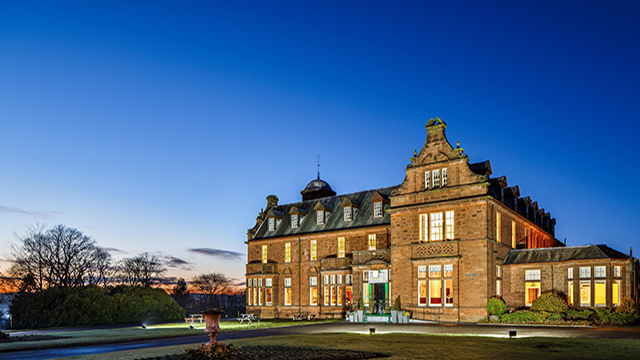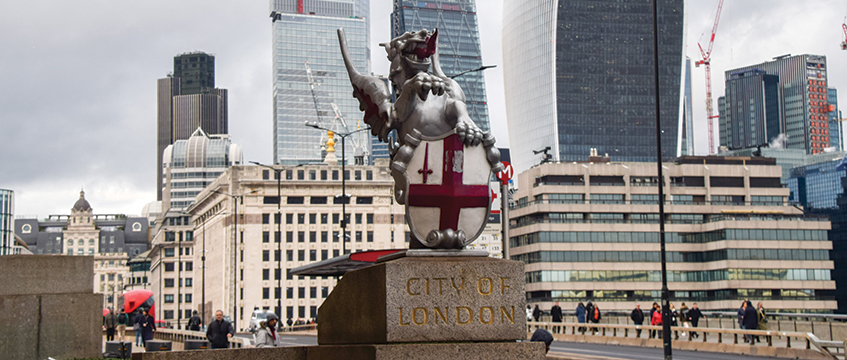Gerald Hines, who has died aged 95, is credited with helping to shape many a city’s skyline and having a transformative influence over the urban environment.
The founder of investor and developer Hines once said that one of the key pleasures of his work was the creation of “outstanding architecture that pleases the people of that city, from the taxi driver to the architectural critics”.
During an interview with architect Robert Stern at the Harvard Graduate School of Design in 2012, Hines added that the developments he delivered had to be buildings that tenants were “proud to be in”.
Some of the industry’s best-known names remember him as an innovator who wanted, above all, for his buildings to bring joy to the communities that grew around them.
“Gerry was a pioneer who recognised the power of design to influence the quality of the lives of people and communities, something that has underpinned his work across the globe,” says Lord Foster, founder and executive chairman of Foster + Partners, who worked with Hines on the 12-acre office-led scheme City Center DC on the site of the former Washington Convention Center.
“I remember speaking at length with him on the social impact of design when he asked me to design an urban quarter in the heart of Washington DC. Sophisticated and urbane, his commercial successes were always underpinned by a sense of ‘doing the right thing’ for the city and its people.”
Foster, who considered Hines a close friend, added that Hines’ strong sense of social responsibility was reflected in his philanthropic work, including his support for the University of Houston’s school of architecture and the establishment of the Urban Land Institute’s urban design prize.
Apart from the pack
Hines was known for his fair dealings with people, gentle wit and enthusiasm for exercise and sports, which began with cross-country running and track at school. But it was his attention to detail and passion for property that over six decades cemented his company’s reputation for delivering quality, well-designed buildings that complemented their surroundings.
For Hines, real estate was about putting the odds in your favour by differentiating yourself from the pack and making sure you offered the best buildings, built for a reasonable price, to secure good tenants paying a top price.
He was born in Gary, Indiana in 1925. He attended the midwestern state’s Purdue University, graduating with a BSc in mechanical engineering, although his higher education was split by a stint in the US Army Corps of Engineers.
After a period spent working for American Blower, which took him to Houston, he became a partner at Texas Engineering, creating and selling mechanical systems for buildings.
His career in development started with work on a 5,000 sq ft building for a neighbour, which set him on a path that led to the establishment of his own development business in 1957.
Hines went on to build some of the Texas city’s iconic buildings, including the 50-storey One Shell Plaza and the dual 36-storey towers known as Pennzoil Place.
In the 1980s he built his first tower in Manhattan, New York, known as the Lipstick building. By this time, he had also expanded the business outside of the US.
His first international project was the delivery of a 10-story office building in Montreal, Canada, known as Les Terrasses, in the 1970s.
His first forays into Europe came in the 1990s, as Hines established offices in London, Paris, Frankfurt and Prague. This expansion saw Hines live in London between 1996 and 2010.
“He had class and humility”
Marcus Meijer, chief executive of Meyer Bergman, worked for Hines in Europe during this period. He remembers Hines as a man who had time for and showed interest in every member of his team.
“He had genuine class and humility. I never saw him raise his voice or lose control. He was always courteous and respectful,” Meijer says, adding: “He had real taste, which was and remains something relatively rare in the real estate development industry. He was far ahead of anyone else in working with world-class architects to create world-class buildings.”
Meijer bumped into Hines several years ago in an elevator in Milan. Impeccably dressed and carrying his own suitcases, he recognised Meijer, to the latter’s astonishment, and the two talked for a while, comparing notes on their respective businesses and Hines asking after Meijer’s family. “That brief, simple encounter just says it all in my view,” Meijer says, adding: “I offered to help him with his bags but he wouldn’t have it.”
Today, Hines is one of the world’s most influential developers, with more than $144.1bn of assets under management in 225 cities across 25 countries and some 4,800 employees.
For Duncan Owen, global head of real estate at asset manager Schroders, it is one of the “goliaths of office development”, its success “fuelled by an understanding of occupier trends and what occupiers want”.
Paying tribute, Michael Topham, a senior adviser at Hines who knew Hines for nearly 50 years, said: “Very few people in a lifetime can begin to have done what Gerald Hines accomplished, to be a true ‘master of the universe’, building buildings on four continents and in every product type.
“Gerry always looked to work with the best people and the smartest minds and always looked to learn to be personally better at doing what he had done before.”
Hines, who passed away at his home on 23 August, is survived by his wife, Barbara, four children, 15 grandchildren and one great grandson.
To send feedback, e-mail louise.dransfield@egi.co.uk or tweet @DransfieldL or @estatesgazette











